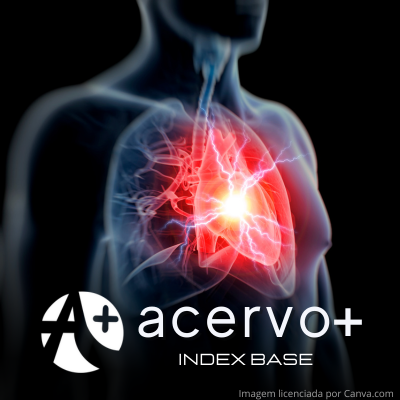Uma análise da cardiopatia reumática
##plugins.themes.bootstrap3.article.main##
Resumo
Objetivo: Analisar as características da Cardiopatia Reumática (CR). Revisão bibliográfica: A CR é uma consequência grave e de longo prazo da febre reumática aguda (FRA), uma doença notavelmente comum que se segue a uma infecção superficial não tratada pela bactéria Streptococcus pyogenes (Streptococcus do Grupo A ou Strep A). A CR tem, portanto, sido vista como uma doença da pobreza associada à superlotação, falta de saneamento e outros determinantes sociais de saúde precária que possibilitam a disseminação do Strep A e o desenvolvimento de CR, causando meio milhão de mortes anualmente. Considerações finais: A cardiopatia reumática é uma grave consequência da FRA representando a principal causa de doença cardíaca entre crianças em países de baixa e média renda. A FRA causa pancardite e, mais comumente, problemas valvares. O diagnóstico da CR é feito através do ecocardiograma e deve-se suspeitar de cardiopatia reumática e todos os pacientes com FRA. Em pacientes com febre reumática aguda recomenda-se a profilaxia com injeção de 4 semanas de penicilina G benzatina (PGB) pra prevenir a progressão da CR. O manejo da CR é feito através do diagnóstico precoce e tratamento da insuficiência cardíaca.
##plugins.themes.bootstrap3.article.details##
Copyright © | Todos os direitos reservados.
A revista detém os direitos autorais exclusivos de publicação deste artigo nos termos da lei 9610/98.
Reprodução parcial
É livre o uso de partes do texto, figuras e questionário do artigo, sendo obrigatória a citação dos autores e revista.
Reprodução total
É expressamente proibida, devendo ser autorizada pela revista.
Referências
2. AUALA T, et al. Acute Rheumatic Fever and Rheumatic Heart Disease: Highlighting the Role of Group A Streptococcus in the Global Burden of Cardiovascular Disease. Pathogens, 2022; 11(5): 496.
3. BAEßLER B e EMRICH T. The role of cardiovascular magnetic resonance imaging in rheumatic heart disease. Clin Exp Rheumatol, 2018; 36 (5): 171-176.
4. BELAY W e ALIYU MH. Rheumatic Heart Disease is Missing from the Global Health Agenda. Ann Glob Health, 2021; 87(1): 110.
5. DOOLEY LM, et al. Rheumatic heart disease: A review of the current status of global research activity. Autoimmun Rev, 2021; 20(2): 102740.
6. DOUGHERTY S, et al. Rheumatic Heart Disease: JACC Focus Seminar 2/4. J Am Coll Cardiol, 2023; 81(1): 81-94.
7. KARTHIKEYAN G e KOTHARI SS. How should the burden of rheumatic heart disease be reduced? Lancet Glob Health, 2023; 11(3): 316-317.
8. KUMAR RK, et al. Contemporary Diagnosis and Management of Rheumatic Heart Disease: Implications for Closing the Gap: A Scientific Statement From the American Heart Association. Circulation, 2020; 142(20): 337-357.
9. JAITEH LES, et al. Rheumatic heart disease in The Gambia: clinical and valvular aspects at presentation and evolution under penicillin prophylaxis. BMC Cardiovasc Disord, 2021; 21(1): 503.
10. LAMICHHANE S, et al. Rheumatic heart disease in the heart of Himalayas. Ann Med Surg (Lond), 2022; 82: 104672.
11. LEAL MTBC, et al. Rheumatic heart disease in the modern era: recent developments and current challenges. Rev Soc Bras Med Trop, 2019; 52: e20180041.
12. LOIZAGA SR e BEATON AZ. Rheumatic Fever and Rheumatic Heart Disease in the United States. Pediatr Ann, 2021; 50(3): 98-104.
13. LONGENECKER CT. Echo Screening for Rheumatic Heart Disease. Circ Cardiovasc Imaging, 2019; 12(2): e008818.
14. MUTAGAYWA RK, et al. Rheumatic heart disease anno 2020: Impacts of gender and migration on epidemiology and management. Eur J Clin Invest, 2020; 50(12): e13374.
15. NEPAL R, et al. Patterns of Rheumatic Heart Disease and Treatment Practices at Tertiary Care Center in Nepal: A Descriptive Cross-sectional Study. JNMA J Nepal Med Assoc, 2020; 58(230): 784-788.
16. PETERS F, et al. Rheumatic heart disease: current status of diagnosis and therapy. Cardiovasc Diagn Ther, 2020; 10(2): 305-315.
17. RALPH AP e CURRIE BJ. Therapeutics for rheumatic fever and rheumatic heart disease. Aust Prescr, 2022; 45(4): 104-112.
18. REGMI PR, et al. Secondary Prevention of Rheumatic Heart Disease in Nepal: Are We Going Backward? JNMA J Nepal Med Assoc, 2022; 60(253): 832-835.
19. RENTTA NN, et al. Medical Treatment for Rheumatic Heart Disease: A Narrative Review. Heart Lung Circ, 2022; 31(11): 1463-1470.
20. SHAWAR YR e SHIFFMAN J. Generating Global Priority for Addressing Rheumatic Heart Disease: A Qualitative Policy Analysis. J Am Heart Assoc, 2020; 9(8): e014800.
21. SHENTHAR J. Management of atrial fibrillation in rheumatic heart disease. Heart Rhythm O2, 2022; 3(6): 752-759.
22. TORRES RPA, et al. Improvement of Rheumatic Valvular Heart Disease in Patients Undergoing Prolonged Antibiotic Prophylaxis. Front Cardiovasc Med, 2021; 8: 676098.
23. VERVOORT D, et al. Rheumatic heart disease: The role of global cardiac surgery. J Card Surg, 2021; 36(8): 2857-2864.
24. ZILLA P, et al. TAVR for Patients With Rheumatic Heart Disease: Opening the Door for the Many? J Am Coll Cardiol, 2021; 77(14): 1714-1716.
25. WATKINS DA, et al. Rheumatic Heart Disease Worldwide: JACC Scientific Expert Panel. J Am Coll Cardiol, 2018; 72(12): 1397-1416.

